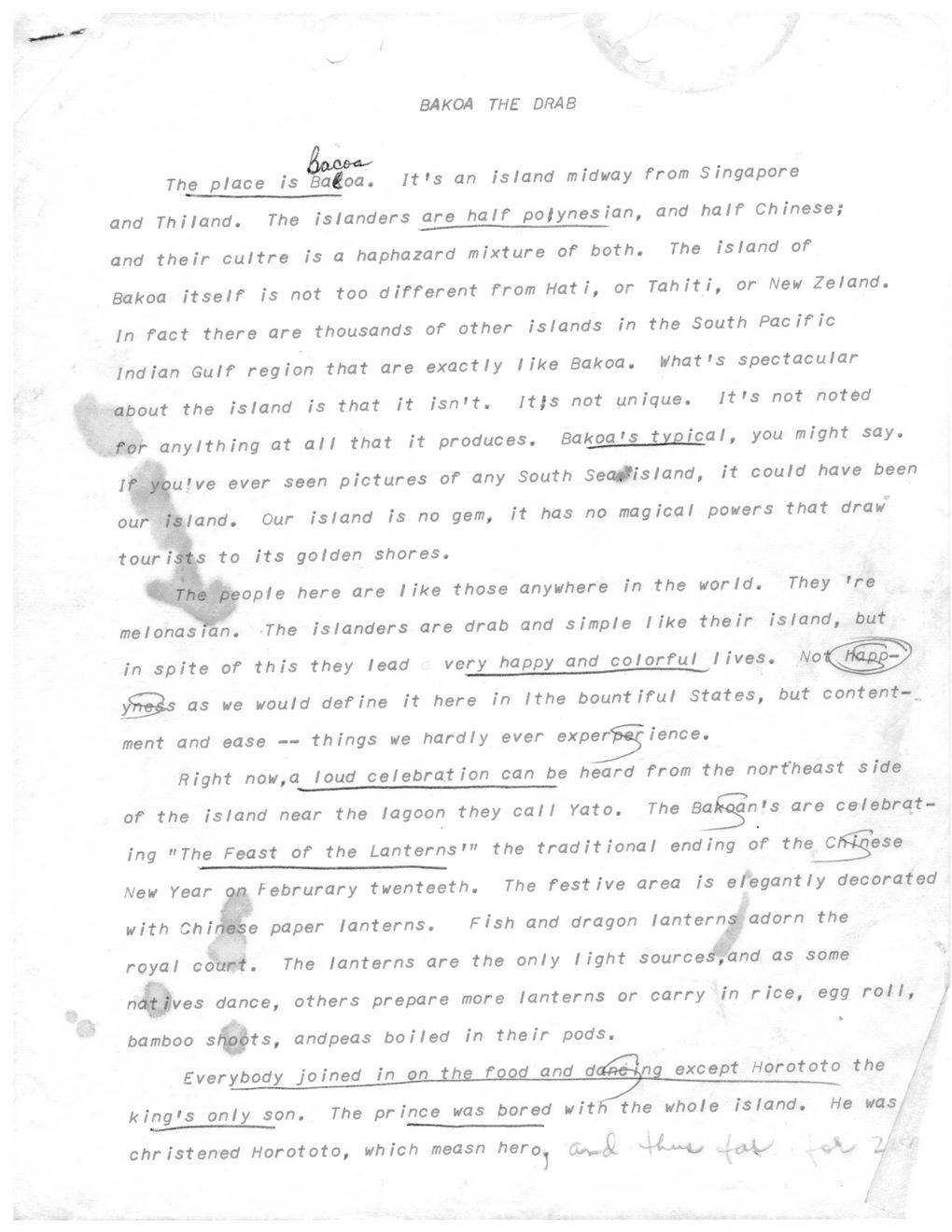This text was obtained via automated optical character recognition.
It has not been edited and may therefore contain several errors.
BAKOA THE DRAB The place is Ba£oa. It's an island midway from Singapore and Thiland. The islanders are half pofynes ian, and half Chinese; and their cultre is a haphazard mixture of both. The island of Bakoa itself is not too different from Hati, or Tahiti, or New Zeland. In fact there are thousands of other islands in the South Pacific Indian Gulf region that are exactly like Bakoa. What's spectacular about the island is that it isn't. Itfs not unique. It's not noted for any I thing at all that it produces. Bakoa's typical, you might say. If yjqufve ever seen pictures of any South Seafisland, it could have been our island. Our island is no gem, it has no magical powers that draw tourisms to its golden shores. The people here are like those anywhere in the world. They 're melonastan. The islanders are drab and simple like their island, but in spite of this they lead very happy and colorful lives. Noi as we would define it here in Ithe bountiful States, but content—_ ment and ease — things we hardly ever exper*pej^ ience. Right now,a loud ceIebrat ion can be heard from the northeast side of the island near the lagoon they call Yato. The Bafco^n's are celebrating "The Feast of the Lanterns'" the trad it ional ending of the CftXqese New Year op Februrary twenteeth. The festive area is elegantly decorated with Chinese paper lanterns. Fish and dragon lanterns adorn the royal court. The lanterns are the only light sources*,‘and as some natives dance, others prepare more lanterns or carry in rice, egg roll, bamboo s^gpts, andpeas boiled in their pods. Everybody joined in on the food and dam&jjiQ except Horototo the king's only son. The prince was bored witnthe whole island. He wasf chr istened Horototo, which measn hero^

Onward Oaks Programs & Shows 1962-1967 (34)